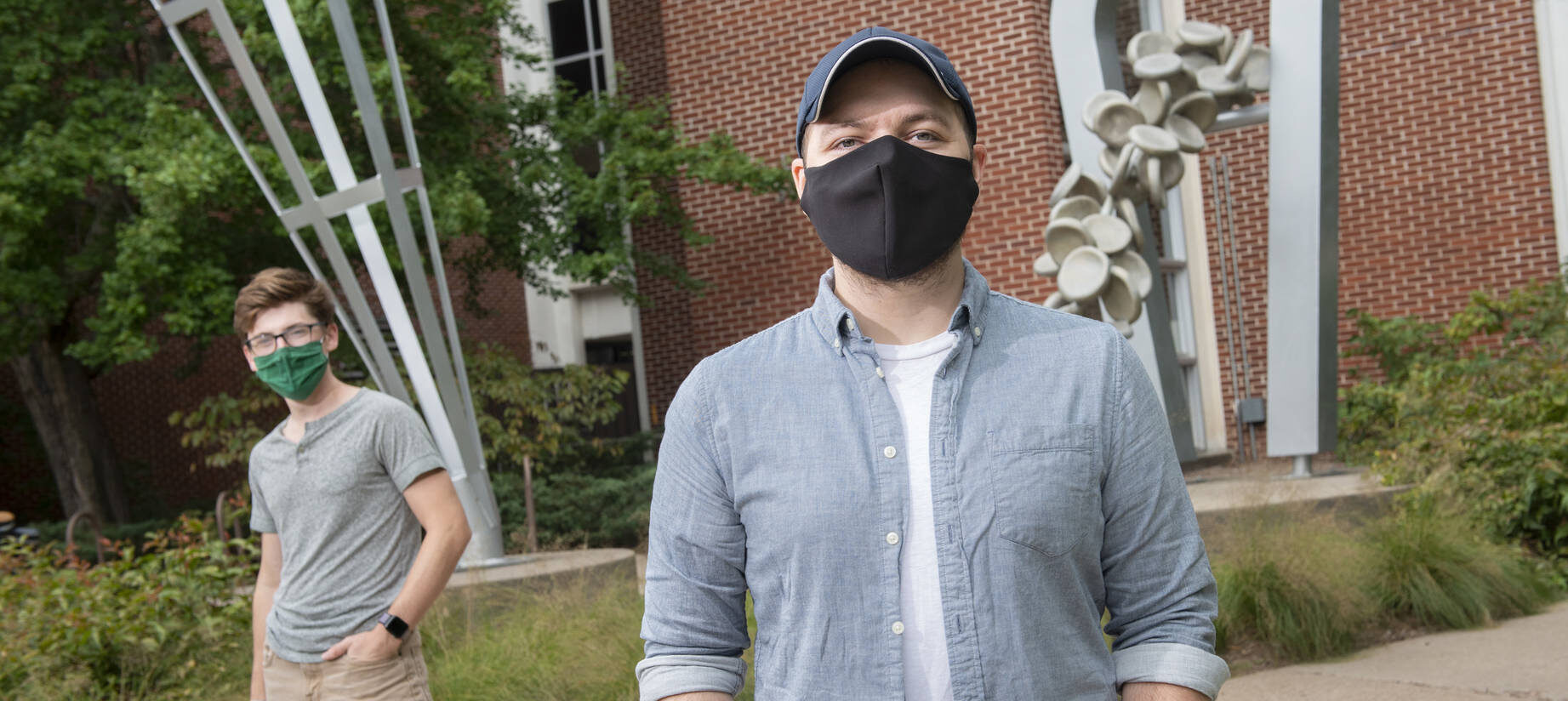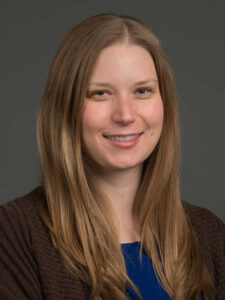
UW-Eau Claire student researchers Aaron Ellefson, right, and Cuyler Monahan are working to develop a clinical foam to protect cancer patients from radiation during treatment.
University of Wisconsin-Eau Claire students Aaron Ellefson and Cuyler Monahan didn’t let COVID-19 deter their collaborative research into developing a clinical foam to protect cancer patients from radiation during treatment.Ellefson, a senior materials science major from Eden Prairie, Minnesota, and Monahan, a senior materials science and engineering major from Mount Horeb, received the Tim Higgins Innovation Award and the $500 prize in the WiSys 2020 Student Research & Innovation Showcase this summer for “demonstrating significant innovative, economic and societal impact.” Higgins is a former UW System Board of Regents member.
WiSys is an independent, nonprofit organization that assists patent technologies developed in UW System schools and works with companies on the inventions.
“Cancer research is particularly rewarding,” Ellefson says. “My maternal grandparents were both successfully treated for melanoma. It is encouraging to know that this project will pave the way for more treatment, more cancer success stories and more time with loved ones.”
Monahan and Ellefson were appreciative of the WiSys recognition. They outlined their project to judges during a five-minute virtual presentation because of the pandemic.
“The WiSys award was confirmation that our work has meaning to people outside of Eau Claire and even outside of Wisconsin,” Monahan says.
The research began in January 2019 when Dr. Jeremy McBride, an interventional radiologist at Mayo Clinic Health System in Eau Claire, contacted UW-Eau Claire’s materials science and engineering department because of Mayo Clinic Health System’s collaborative agreement with the university. McBride had worked on the idea of an injectable foam during his Mayo Clinic training in Rochester, Minnesota, but his hospital duties in Eau Claire have since limited his research time.

Dr. Elizabeth Glogowski
Dr. Elizabeth Glogowski, an associate professor of materials science and engineering who facilitated the student research, says the foam idea fit with her research experience in soft materials. The Materials Science and Engineering Center at UW-Eau Claire funded a pilot study in spring 2019 and supported student researchers in a test to see if the project was feasible, Glogowski says. Funding from Mayo Clinic Health System in Eau Claire assisted the student work.
Ellefson was among those UW-Eau Claire student researchers and he worked collaboratively with two other students to lay the groundwork for the clinical foam development. Ellefson eventually worked on the project alone before Monahan joined the research this summer.
Monahan appreciates that Glogowski invited him to become involved in the research this summer after most internship opportunities were shut down by COVID-19.
“Research was not my first choice, but it should have been,” Monahan says. “The precautions that the university took to keep us safe at this time were admirable. I gained so much valuable experience that I didn’t know that I would be missing out on had I not decided to do research.”
Ellefson and Monahan used their creativity and problem-solving abilities learned in materials science courses and applied them to the research project, Glogowski says.
The student researchers accepted Glogowski’s “open-ended guidance” as she asked them to use advanced research skills to develop and implement testing methods.
Glogowski says the hard work, dedication and creativity of Ellefson and Monahan helped make the research successful.
“They’ve taken it to the next level from learning how to do things in their courses to applying it to a real-world application,” Glogowski says. “It’s been a true collaboration with the students, myself and Dr. McBride.”
With the new biomedical innovation grant, Ellefson and Monahan will be joined by two additional students throughout the 2020-21 academic year as they hope to test the foam on tissues to continue their research and prepare for human trials one day.
Monahan calls the work “exciting and rewarding,” while Ellefson has high hopes for the project.
“My hopes, along with the hopes of everyone involved in the project, are by no means modest,” Ellefson says. “This project requires ambition. We are developing resources for Mayo Clinic that have vast potential. This research could be expanded to treating other afflictions and be actualized throughout the medical field. The goal of the project has always been cancer treatment within the next few years with an eye on the horizon for what possibilities we unlock.”
Ellefson says research opportunities such as the clinic foam project are exactly what he had in mind when he decided to attend UW-Eau Claire.
“Involving students in research means tapping into bright minds that are eager to shape the future,” Ellefson says. “The substantial involvement of undergraduate students in research is a big draw for this school. I have had tons of hands-on experiences that are sometimes only available to graduate students at other universities. Time in the lab can’t be done online and makes a distinctive choice for education in a time of growth for off-site learning.”
Top caption: UW-Eau Claire student researchers Aaron Ellefson, right, and Cuyler Monahan are working to develop a clinical foam to protect cancer patients from radiation during treatment.
